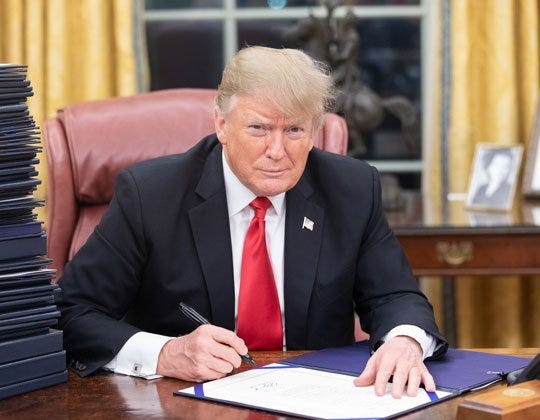The U.S. has announced a strategy of imposing reciprocal tariffs, mirroring the tariff rates that other countries apply to American goods. This approach, part of former President Donald Trump’s “America First” agenda, seeks to address perceived imbalances in global trade by ensuring the U.S. does not face higher tariffs than it imposes on foreign imports. It builds on Trump’s earlier protectionist measures, such as the 2018-2019 trade war with China and tariffs on steel (25%) and aluminum (10%).
Rationale & Goals
The policy aims to pressure trading partners to lower their trade barriers, arguing that asymmetric tariffs disadvantage U.S. industries. By threatening reciprocal measures, the U.S. hopes to gain leverage in negotiations, potentially boosting domestic manufacturing and reducing reliance on imports. Proponents claim it defends industries like steel and tech from “unfair” foreign competition.
Past Actions & Escalation Risks
Previous tariffs under Trump led to retaliatory measures: China imposed duties on U.S. agricultural exports, and the EU targeted products like motorcycles and bourbon. Critics warn the new policy risks repeating such cycles, disrupting supply chains and inflaming trade tensions. For example, if the U.S. matches the EU’s car tariffs, Europe might retaliate further, harming sectors like agriculture.
Economic & Consumer Impact
Pros:
- Short-term protection for targeted industries, possible job retention in manufacturing.
Cons:
- Higher consumer prices (e.g., electronics, automobiles) due to import costs; strain on industries reliant on global supply chains, like automotive and agriculture. Escalating tariffs could worsen inflation, particularly amid post-pandemic recovery efforts.
Economists are divided:
Supporters:
- Argue reciprocity forces fairer trade terms, revitalizing sectors like steel.
Critics:
- Warn of trade wars destabilizing global markets, citing the 2018-2019 conflict, which the IMF estimated reduced global GDP by 0.8%. Long-term, reduced cooperation could weaken institutions like the WTO.
Long-Term Implications
While the policy may reshape trade dynamics by compelling partners to negotiate, it risks fragmenting international trade norms. The balance between protecting industries and maintaining global economic stability remains contentious, with outcomes likely influencing future U.S. trade strategies and geopolitical relationships.
FOLLOW:https://newsroom47.com/z-category-security-cover-extended-to-dalai-lama/
Newsroom 47
